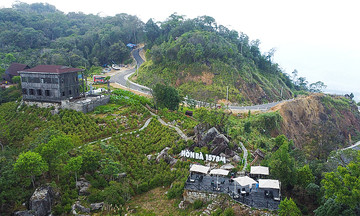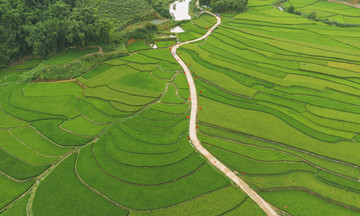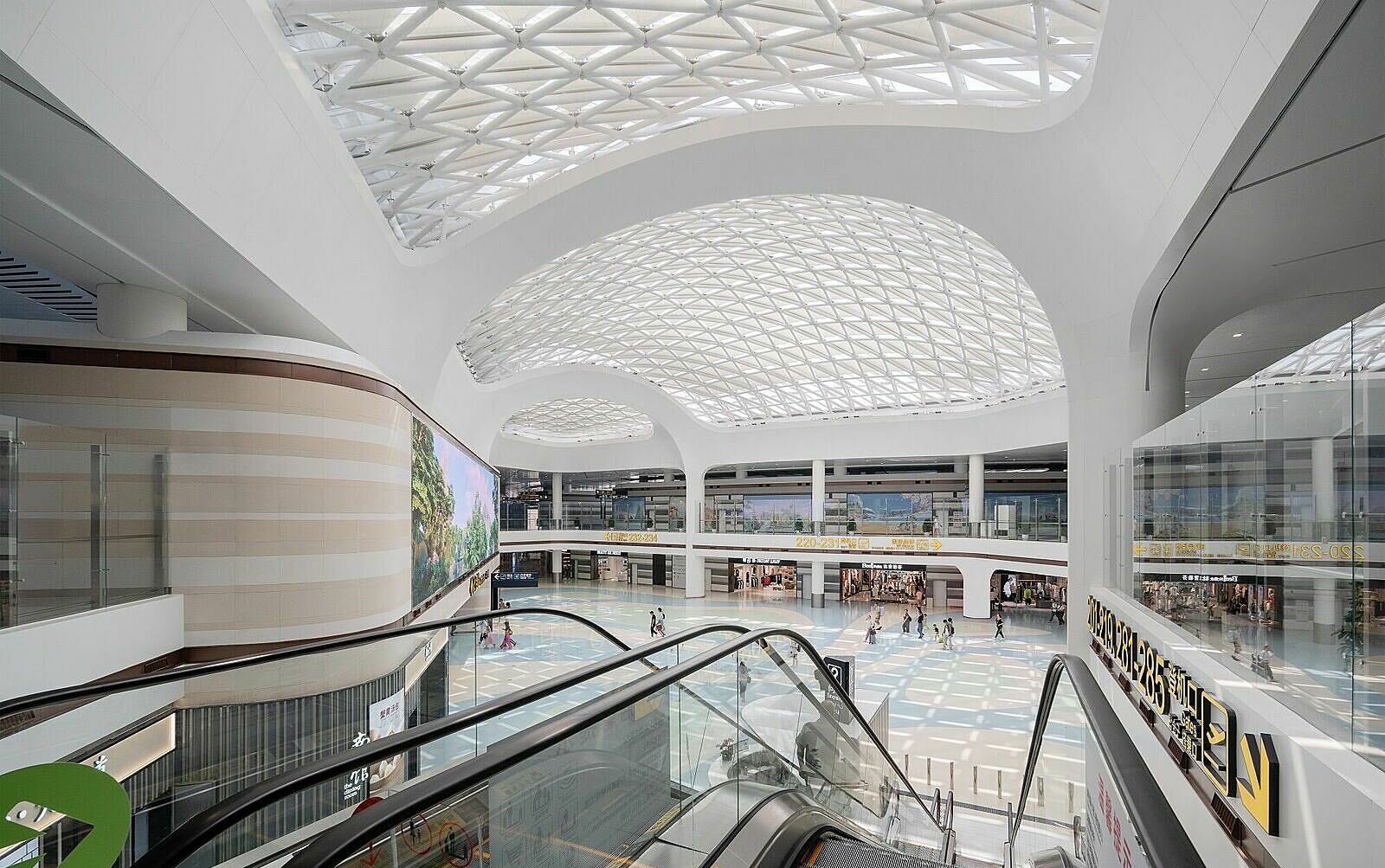 |
Modern airports are evolving beyond mere transit hubs, becoming iconic architectural marvels that seamlessly blend functionality, aesthetics, and sustainability. Prix Versailles, a prestigious annual global architecture award, has unveiled its 2024 list of the world’s most beautiful airports, emphasizing intelligent, sustainable design.
Here are the 6 airports recognized for their operational excellence, environmental consciousness, and stunning design.
Yantai Penglai International Airport, China
The highlight of Yantai Penglai International Airport is its 167,000 m² Terminal 2, inspired by the coastline and majestic Kunyu Mountains of the Yantai region.
Designed by a consortium of Aedas, CSWADI, and the Shanghai Airport Design and Research Institute, the E-shaped terminal optimizes passenger flow and minimizes impact on the existing terrain.
The interior features natural materials and color palettes, bathed in natural light to create a relaxing atmosphere for passengers. Some interior details, reminiscent of wooden ship hulls, evoke the Maritime Silk Road.
Photo: Archello
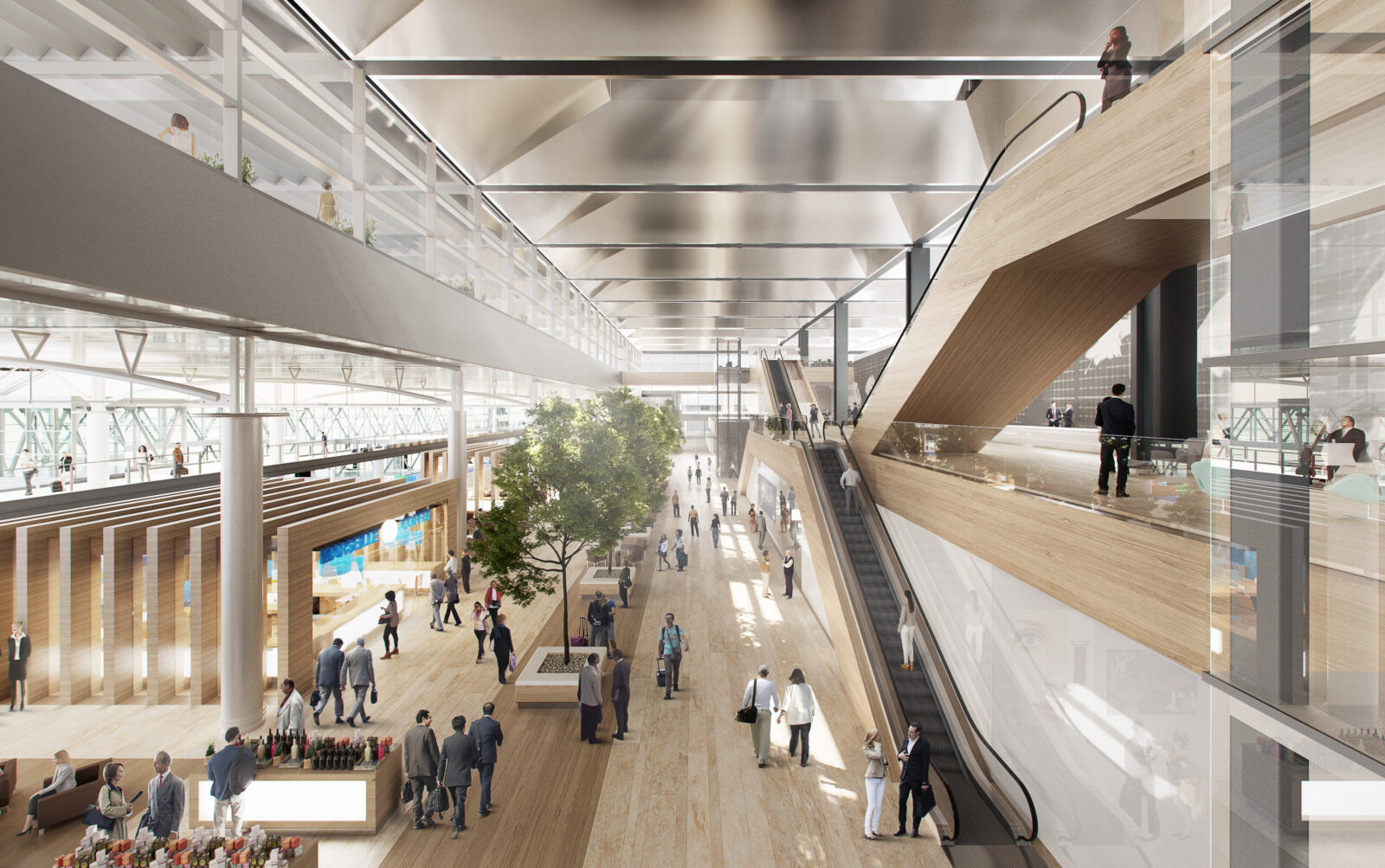 |
Marseille Provence Airport, France
Second place goes to Marseille Provence Airport, where Foster + Partners recently completed a 22,000 m² expansion and upgrade of Terminal 1 without increasing the building's footprint.
Constructed with 70% recycled steel, the terminal boasts a polished aluminum skylight ceiling that facilitates natural ventilation. The project also involved renovating 28,000 m² of the old terminal, seamlessly connecting Fernand Pouillon's 1960s design with Richard Rogers' 1990s extension.
The security check area now sits beneath a wooden roof, while shops and restaurants evoke the style of boat hulls, reminiscent of Marseille's historic port. Expansive glass windows offer passengers views of both the Provençal countryside and the sea lagoon.
According to Jerome Gouadain, Secretary General of Prix Versailles, even functional airport spaces like departure halls and check-in counters can become artistic focal points. "We should view airports not just as technical infrastructure, but as part of the urban landscape, structures worthy of admiration," he said.
Photo: Foster + Partners
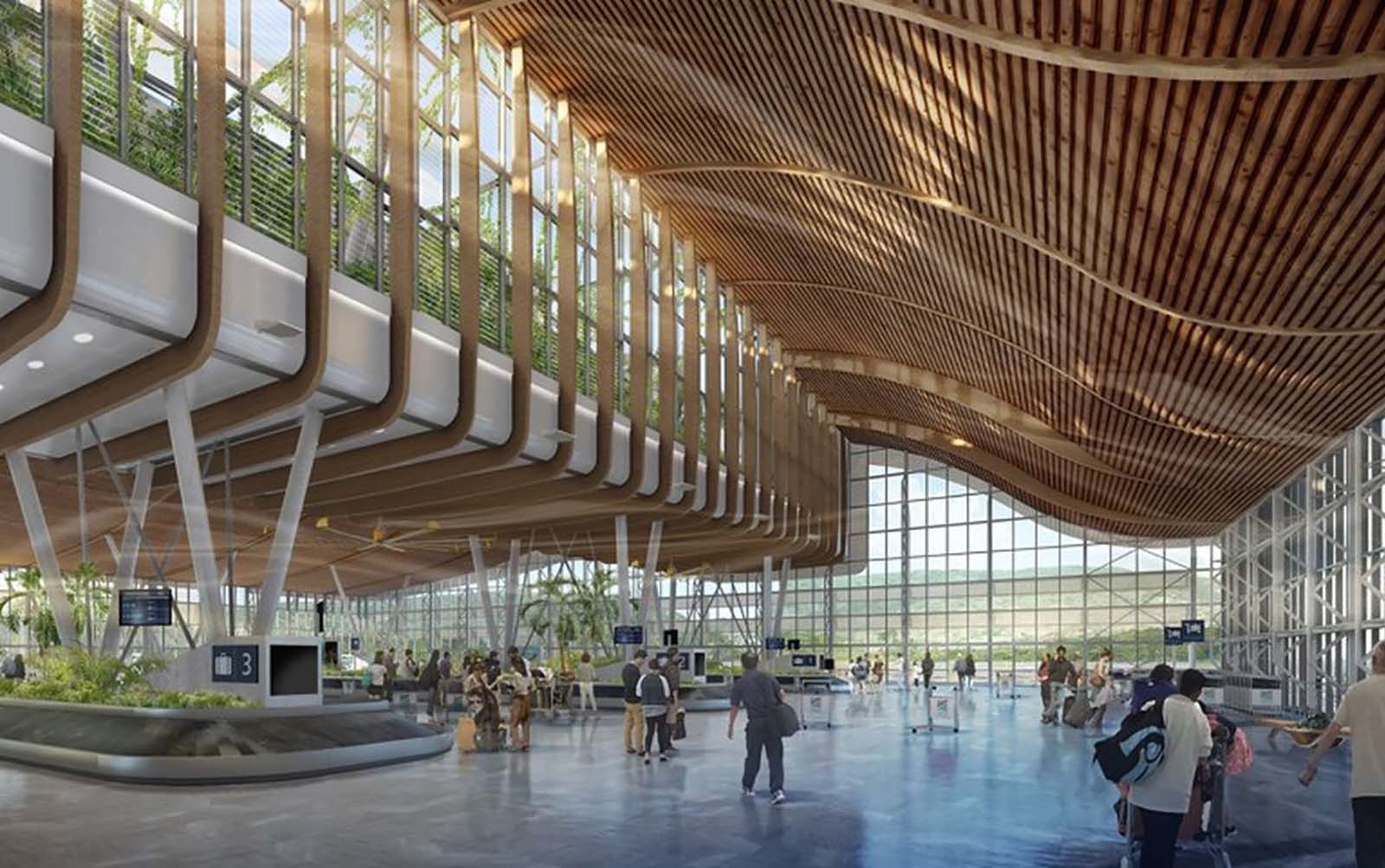 |
Roland Garros Airport, France
The 13,000 m² arrival terminal at Roland Garros Airport on Reunion Island is the world’s first large-scale application of tropical climate architecture.
The terminal’s design maximizes local workforce participation (91%) and incorporates local climate factors like cyclones and strong winds. A central "canyon" acts as a thermal chimney, providing natural ventilation.
Over 830 automated shutters adjust according to external environmental sensors. Local wood and vegetation are used throughout the terminal, creating an immersive journey rich in cultural and natural heritage.
Photo: Les Echos
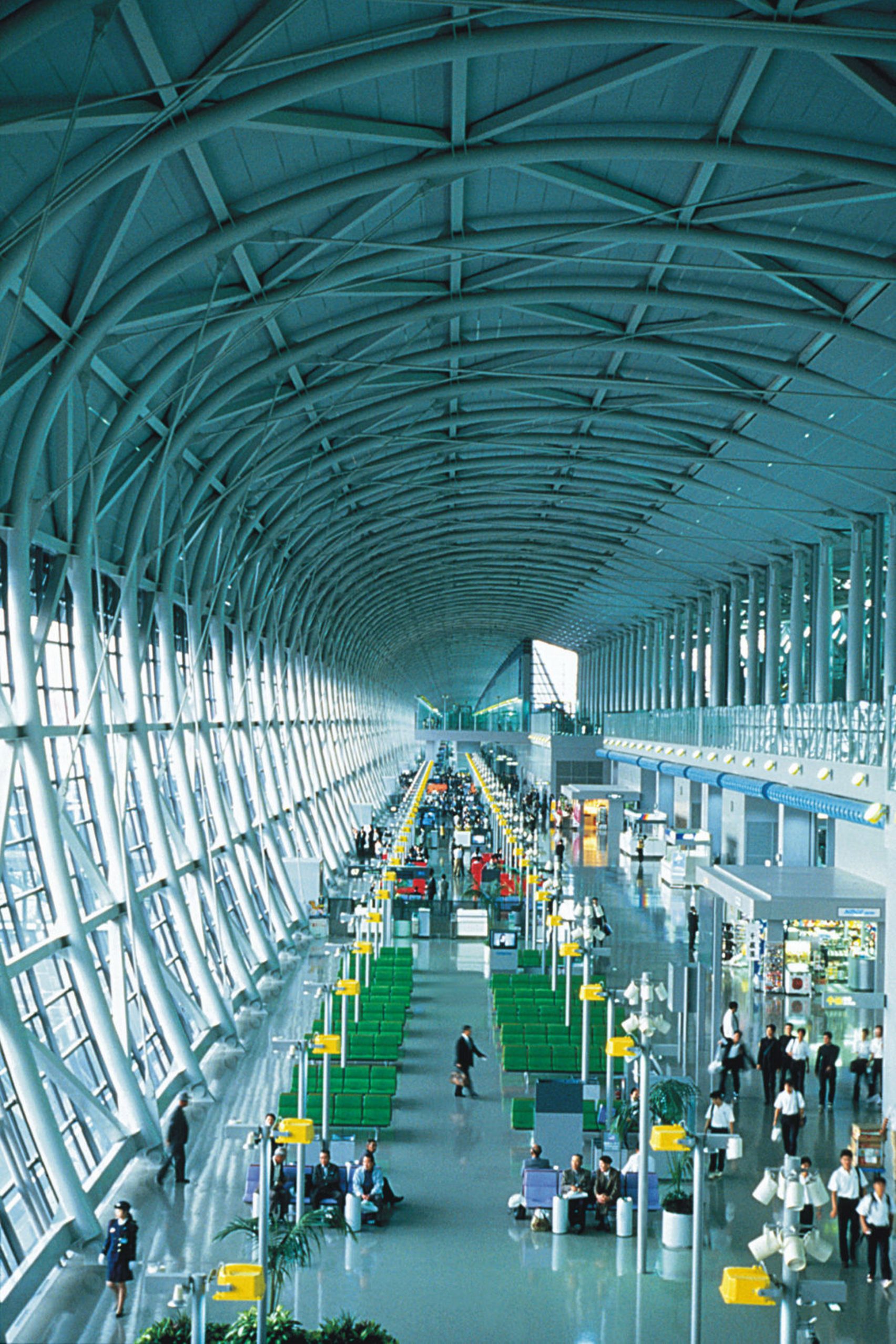 |
Kansai International Airport, Japan
Ranking 4th is Kansai Airport, an architectural icon situated on a man-made island in Osaka Bay, designed by architect Renzo Piano three decades ago.
Terminal 1 has recently been upgraded, increasing international passenger capacity by 25%. The interiors have been refreshed with neutral colors and natural materials, emphasizing contemporary Japanese aesthetics. Despite being 30 years old, Kansai retains its iconic aerodynamic structure and pioneering role in offshore airport design. Photo: Dezeen
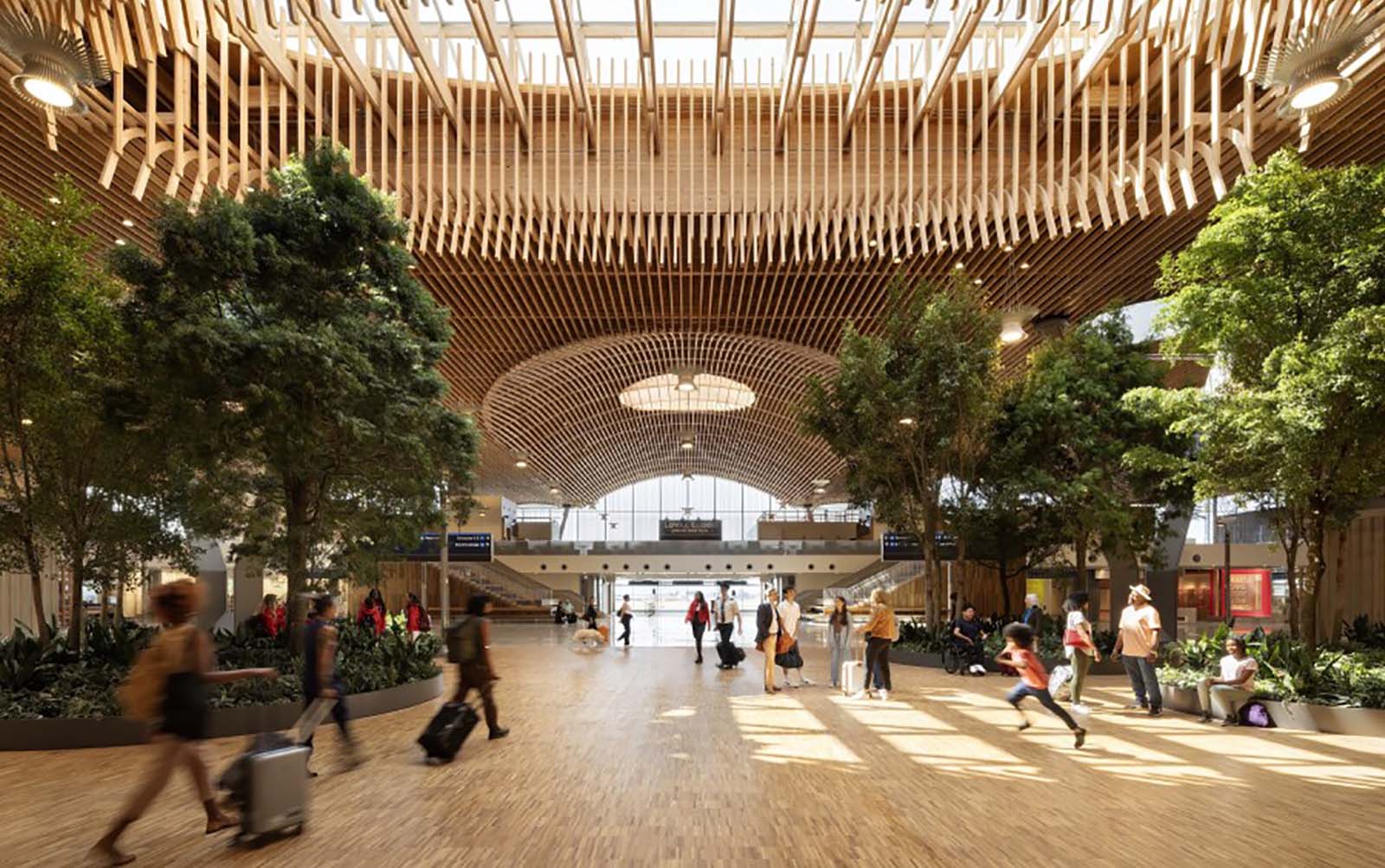 |
Portland International Airport, USA
Ranked 5th is the new main terminal at Portland International Airport, designed by ZGF Architects. Inspired by Oregon's forest trails, the structure offers a calming, nature-infused passenger experience.
The architectural centerpiece is a sweeping, mass-timber roof spanning over 36,000 m², celebrating Oregon's rich timber heritage. All materials were sourced within a 500 km radius of the airport.
The design allows natural light to flood the space, offering expansive views of the surrounding forest landscape, while incorporating numerous ecological elements into the interior design. An intelligent queuing system has also been implemented to optimize passenger flow.
Photo: Afar
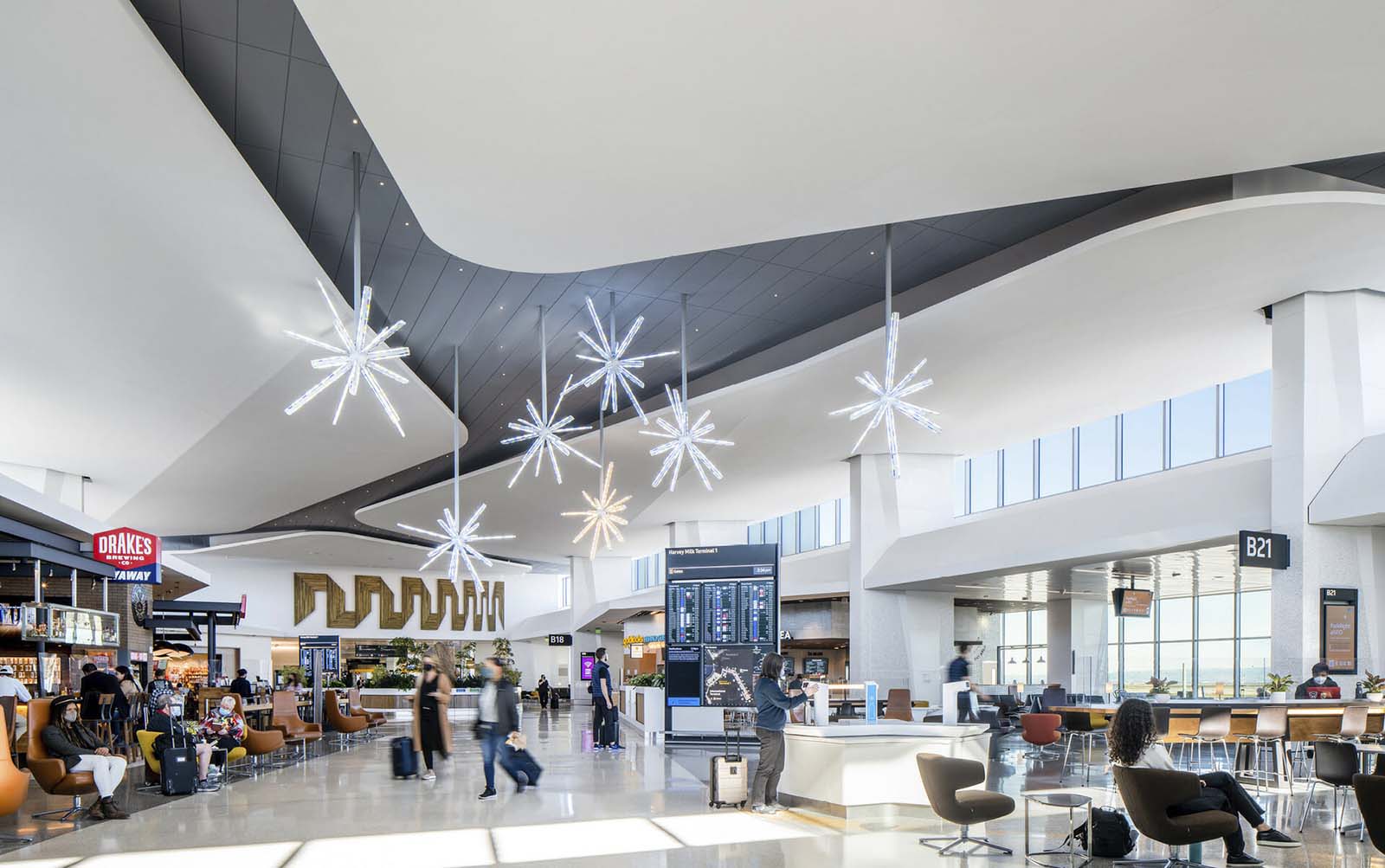 |
San Francisco International Airport, USA
Sixth place goes to San Francisco International Airport's Terminal 1, featuring 25 new gates and a clear commitment to sustainability.
According to the Prix Versailles organizers, the project has achieved a 79% reduction in carbon emissions and a 59% reduction in energy consumption compared to traditional designs. Natural light is maximized on every level, creating a soft and relaxing atmosphere for passengers.
The terminal also showcases traditional arts and crafts, reflecting the unique character of the San Francisco Bay Area. Notably, it houses the world’s only accredited museum in an airport, the SFO Museum, with exhibits throughout the terminals.
Terminal 1 also serves as a memorial to Harvey Milk, California's first openly gay elected official, a symbol of tolerance and inclusion. Milk served on the San Francisco Board of Supervisors. Photo: Wood Bagots
Anh Minh (From Euro News)




